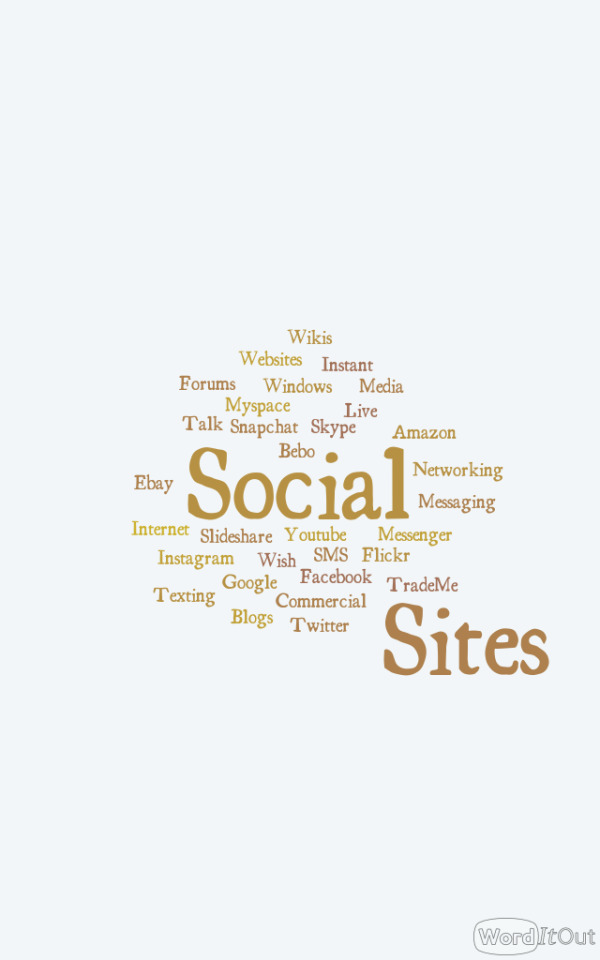Don't wanna be here? Send us removal request.
Text
Responsibilities & Protocols of DCT’s
It is important to remember that as temping as it is to be socializing with ones friends on social media. For example if employers pay a certain amount to the employees for their job but they waste their time on social media. The employees waste their personal time. However large companies and bushiness have their own social media page to for the viewers which can make income for the business because they gain more customers from using the social media site e.g. Twitter
0 notes
Text
Purpose & Software of DCT’s
1. Email - Emails are used for the purpose of communication, such as communicating with instructors and professors, keeping in touch with friends, requesting information from other people or businesses, applying for scholarships, jobs and internships.
What software/hardware technology does Email use?.
Office 365
2. SMS – Texting - One purpose of SMS text messaging is to provide a means of communication that people can use when it is most appropriate for them. For example, when you receive a text message from someone, you can wait to respond until it is most convenient for you.
What software/hardware technology does SMS use?.
Page Gate is a high capacity software application, with built in redundancy and failover capabilities ensuring that urgent text messages are sent in a timely manner.
3. Twitter (Social Media) - Young users flocked to Twitter as a means to communicate quickly, effectively and with a variety of levels of privacy. As it became popular it became a means of sharing information directly with a person or group of people and as a means of broadcasting information.
What software/hardware technology does Twitter use?.
Twitter mostly uses Ruby on Rails for their front-end and primarily Scala and Java for back-end services. They use Apache Thrift (originally developed by Facebook) to communicate between different internal services.
0 notes
Text
DCT Threats
1st Threat - Spams:
Brief explanation of threat: Spam is when you bombard someone with advertisements and other unwanted garbage (just like TV!), it is also when you post meaningless, useless stuff on forums. It's also a meat substitute thingy.
Legal issues: It's not against the law, though many websites have rules against it.
Ethical issues: None, go spam to your hearts content, Anons of the world.
How to prevent Spams:
1. Try to avoid opening spam emails and clicking on links in spam messages.
2. Don't buy anything from a spammer.
3. Don't be tempted to reply.
4. Don't threaten the spammer.
5. Avoid 'unsubscribe' options.
6. Use a disposable email address.
What to do if the treat happened to you:
1. Ask your internet service provider (ISP) about arranging a spam filtering service with your internet connection.
2. If you are using a web-based email address, such as Gmail, activate the junk or spam email preferences. You can also purchase spam-filtering software for your email account.
2nd Threat - Cyber-stalking:
Brief explanation of threat: Stalking is a term commonly used to refer to unwanted attention by individuals (and sometimes groups of people) to others.
Legal issues: New Zealand Harassment Act 1997, Crimes Act 1961, Domestic Violence Act 1995, Telecommunications Act 1987
Ethical issues: Stalking is harassment. Harassment is wrong.
How to prevent the threat:
1. Be careful what personal information you share online including in email, on social networking sites like Facebook and Twitter and chat rooms. It is very easy to glean information about where you live, the places you love to go to in your area and the people you care about from posts and pictures.
2. Make sure that your internet service provider (ISP), cell phone service, instant messenger (called internet relay chat, or IRC in some terms of service) network and other services you use has an acceptable privacy policy that prohibits cyberstalking. If they have none, suggest they create one and/or switch to a provider that is more responsive to user privacy concerns and complaints.
3. Services such as Facebook change their privacy policy all the time, so it is a good idea to check your privacy settings to make sure you are sharing the information you want to share with people you trust and not the general internet public. Some sites have options for you to test how your profile is being viewed by others – test and make sure you only reveal what is absolutely necessary.
What to do if the threat happened to you:
1. Trust your instincts. If you feel uncomfortable or an online situation becomes hostile, remove yourself from the online space by logging off or surfing elsewhere, or block the other persons access to you.
2. If you are receiving unwanted contact, make clear to that person that you would like him or her not to contact you again. Many women who have reported being harassed do this and warn that any further contact will result in the filing of a police report. Depending on the harasser, engagement with the person can escalate or cease, so if you consider contact appropriate and necessary, do so once and document it.
3. Save all communications with the stalker for evidence. Do no edit or alter them in anyway. Try using print screens, especially if the harassment is happening in real-time.
4. Tell your family and friends that someone is stalking you online. Being stalked – online or offline – is a traumatic experience and support from your family and friends is critical at this time to help you cope. Also check that what they are revealing about you and their relationship with you in their online spaces, albeit inadvertently.
5. Tell your employer that someone is stalking you if you think this person may harass you in the workplace. Your employer will be more likely to back you up if they receive harassing or questionable messages about you from the cyber-stalker, and they may be helpful in mitigating any professional damage.
0 notes
